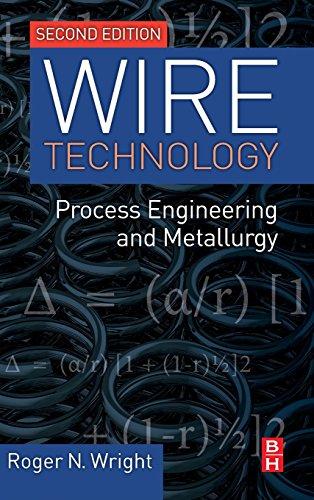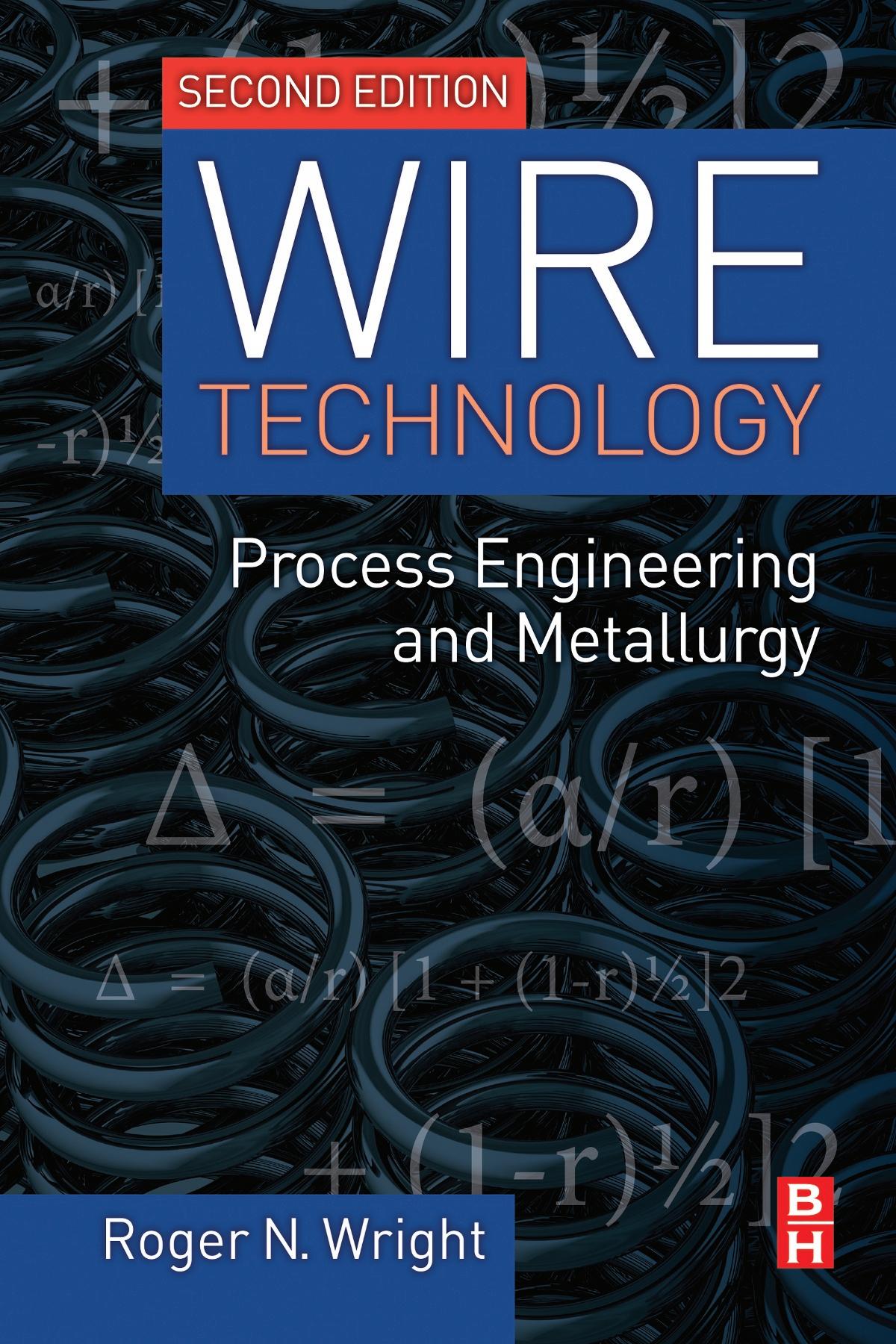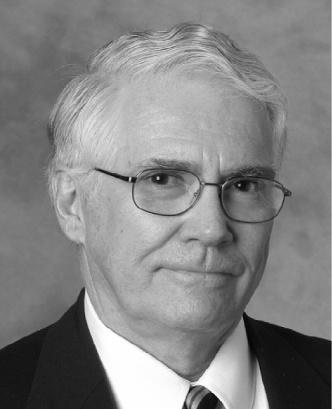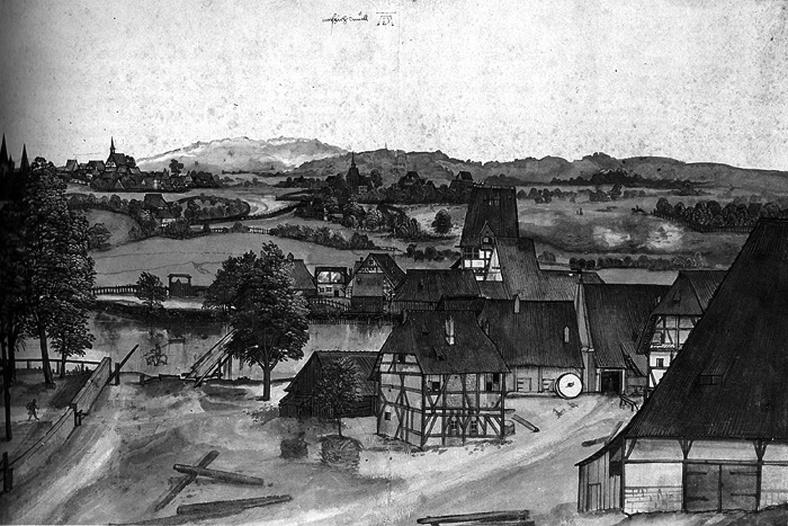https://ebookmass.com/product/wire-technology-secondedition-process-engineering-and-metallurgy-roger-n-wright/
Instant digital products (PDF, ePub, MOBI) ready for you
Download now and discover formats that fit your needs...
Biofuels engineering process technology 2nd Edition Caye M. Drapcho
https://ebookmass.com/product/biofuels-engineering-processtechnology-2nd-edition-caye-m-drapcho/
ebookmass.com
Biscuit Baking Technology, Second Edition : Processing and Engineering Manual Iain Davidson
https://ebookmass.com/product/biscuit-baking-technology-secondedition-processing-and-engineering-manual-iain-davidson/
ebookmass.com
Chemical Engineering Process Simulation 1st Edition Nishanth G. Chemmangattuvalappil
https://ebookmass.com/product/chemical-engineering-processsimulation-1st-edition-nishanth-g-chemmangattuvalappil/
ebookmass.com
Macroeconomics 13th Edition Roger A. Arnold
https://ebookmass.com/product/macroeconomics-13th-edition-roger-aarnold/
ebookmass.com
WIRE TECHNOLOGY ProcessEngineeringand Metallurgy
SecondEdition
By ROGERN.WRIGHT
AMSTERDAM • BOSTON • HEIDELBERG • LONDON
NEW YORK • OXFORD • PARIS • SAN DIEGO
SAN FRANCISCO • SINGAPORE • SYDNEY • TOKYO
Butterworth-Heinemann is an imprint of Elsevier
10.ShapedDiesandRollerDies115
10.1 DrawingShapeswithOne-PieceDies115
10.2 DrawingwithUnpoweredRollerDieSystems120
10.3 “Drawing” withPoweredRollerDieSystems123
10.4 RollGapIssues125
10.5 QuestionsandProblems126
11.MechanicalPropertiesofWireandRelatedTesting129
11.1 TheFlowStressoftheWire130
11.2 TheTensileTest132
11.3 TheCrystalPlasticityBasisfortheFlowCurve140
11.4 OtherMechanicalTests146
11.5 HardnessTests146
11.6 CompressionTests148
11.7 BendingTests150
11.8 TorsionTests152
11.9 CreepTesting153
11.10 FatigueTesting154
11.11 SpringbackTesting155
11.12 EvaluatingResidualStress156
11.13 QuestionsandProblems157
12.DrawabilityandBreaks159
12.1 PracticalDefinitions159
12.2 MeasuringandEstimatingDrawability160
12.3 CategorizingDrawingBreaks166
12.4 MechanicsofDrawingBreaks168
12.5 TheGenerationof “Fines” 173
12.6 QuestionsandProblems175
13.RelevantAspectsofCopperandCopperAlloyMetallurgy177
13.1 ImportantPropertiesofCopper178
13.2 PrimaryProcessing178
13.3 CrystalStructure,Grains,Texture,Anisotropy,andSpringback181
13.4 FlowStress,ColdWorking,andAnnealing184
13.5 SolidSolutionsandPhases188
13.6 FactorsAffectingConductivity/Resistivity190
13.7 DiluteCopperAlloys192
13.8 High-AlloySystems194
PREFACE
Beinginafamilywithseveralgenerationsofprofessionalpractitionersin metalsprocessingandtheteachingthereof,Isupposemywritingofthis bookwasinevitable.Evenso,Imustclearlyacknowledgetwostronginfluencesoutsideofthefamilysphere.ThefirstwasthelateWalterA.(Al)Backofen,professorofmetallurgyandmaterialsscienceatMITahalfcenturyor soago.WhileIreceivedthebenefitofsomeofhislectures,hismajorimpact wasbythewayofhisbook DeformationProcessing,Addison-Wesley,1972. ThisbookwasthefirstthatIamawareoftoteachdeformationprocessing withmajoremphasison Δ,theshapeofthedeformationzone.Tobesure, Δ oritsequivalentwasutilizedinsomeofthemoreenlightenedmid-twentieth centurywiredrawingresearch(mostnotablythatofJ.G.Wistreich)andcitationsoftheimportanceofdeformationzonegeometrycanbefoundinthe literatureofthe1920s.However,Backofenpowerfullyemployeditasa teachingtool,bringingtogetheraconsiderablearrayofmechanicalanalyses, processdesigns,andmechanicalmetallurgicalphenomenology.Asayoung metallurgist,Iassumedthatjustabouteverybodyused Δ,onlytofindout thatitswork-a-dayindustrialapplicationshadbeenminimal.Inthiscontext, Iappliedit(arguablyevenoverappliedit)everychancethatIhad,andinthe wireindustryIbelieveithasbeenofsignificantvalue.Inanycase,itiscentral tomuchofthisbook,andIhaveProfessorBackofentothank.
TheotherinfluencethatIwouldliketocitewasDr.AlanT.Male,my managerduringtheyearsthatIspentatWestinghouseResearchLaboratories.Alanwas,ofcourse,renownforhisdevelopmentoftheringcompressiontestthatquantifiesfrictioninforging(abrilliantapplicationof deformationzonegeometry,incidentally).Moreover,hehadbeenafaculty memberatTheUniversityofBirminghamandhadaninstinctiveandsynergisticapproachtoapplyingrigorousresearchtechniqueandperspectiveto industrialprocessingsystems.He,earlyon,directedmyinvolvementina widevarietyofsophisticatedwireprocessingstudies,aswellasinthesupervisionofindustrialsocietyseminarsandshortcourses.WhenIleftWestinghousetojointhefacultyatRensselaerPolytechnicInstitutein1974,Ihad beengivenathorougheducationinwireprocessing,togowithmybroader backgroundsinmetallurgyandmetalsprocessing.
Addressingthesubjectathand,Ihavewrittenthisbookinthestyleofan upper-levelundergraduate,orpossiblygraduate-leveltext,acknowledging
thatoneisnotlikelytofindsuchacourseonwireprocessing,exceptperhaps inEasternEurope.Thisapproachhasallowedmetousedirectlymuchofmy experienceintechnology-focusedshortcourses,aswellasmyexperiencein teachingundergraduatesandgraduatestudentsatRensselaer.Ihavewritten itwiththehopethatitwillbeusefulforself-studyandcontinuingeducation offerings,aswellasservingasadeskreference.Atthispointintime,Ibelieve thatitoccupiesauniquepositionintheengineeringliterature.
Thissecondeditiondiffersfromitspredecessorprimarilyinitssummary andcitationofrelevantresearchofthe2009-2015timeframe.
Finally,IwouldliketothankthemosthelpfulstaffatElsevierInc.,particularlyJeffreyFreeland,fortheirpatienthandlingofthissecondeditionof mybook.
ABOUTTHEAUTHOR
RogerN.Wright,professoremeritus,School ofEngineering,RensselaerPolytechnic Institute,hascontributedbroadlytotheliteratureintheareasofmetallurgyandmetals processingandisactiveasashort-course lecturerandconsultant.Priortojoining Rensselaer,hewasaseniorstaffmemberat WestinghouseResearchLaboratoriesandat AlleghenyLudlumSteelCorporation.He holdsB.S.andSc.D.degreesinmetallurgy fromMassachusettsInstituteofTechnology. Heisaregisteredprofessionalengineeranda fellowofASMInternationalandoftheSocietyofManufacturingEngineers.
stretching,allfurtherelongationwillbeconcentratedatasinglelocation (aneck),whichwillrapidlythinandbreak.Thisoccursbecausethedecrease incross-sectionalareaeventuallyweakensthewiremorethananystrengtheningthatoccursbyworkhardening.Heavilydrawnwirewillhavelittleor nowork-hardeningcapabilityandwillneckalmostatonceifsubjectedto simplestretching.Althoughsomecomplex“dieless”drawingsystemshave beeninvented,simplestretchinghasonlylimitedapplicationbecauseofits vulnerabilitytonecking.
1.2.2ASimpleExplanationoftheDrawingProcess
Inthedrawingprocess,a pullingforce anda pressureforce,fromthedie, combine tocausethewiretoextendandreduceincross-sectionalarea, whilepassingthroughthedie,asschematicallyillustratedin Figure1.1. Becauseofthiscombinedeffect,thepullingforceor drawingforce can belessthantheforcethatwouldcausethewiretostretch,neck,andbreak downstreamfromthedie.Ontheotherhand,ifareductiontoolargein cross-sectionalareaisattemptedatthedie,thedrawingforcemaybreak thewire.Incommercialpractice,engineeredpullingloadsarerarelyabove 60%oftheas-drawnstrength,andtheareareductioninasingledrawingpass israrelyabove30%or35%andisoftenmuchlower.Aparticularlycommon reductioninnonferrousdrawingisthe AmericanWireGage(AWG) numberorabout20.7%.Manydrawingpassesareneededtoachievelarge overallreductions.
Figure1.1 Schematicillustrationofforcesindrawing.
1.3QUESTIONSANDPROBLEMS
1.3.1. Oneoftheprocessesschematicallyillustratedin Figure1.2 isparticularlywellsuitedtoverylongworkpiecelengths,asisdrawing.Whichprocessisthis?Whyaretheothertwoillustratedprocessesnotaswellsuited?
Answer:Rollingisparticularlywellsuitedtoverylongworkpiece lengths,suchascoils,becauseitisacontinuousprocess.Forginginvolves alimitedworkpiece,whichisconstantlychangingshape.Extrusionusually involvesalimitedworkpiece,aswell,althoughsome“continuous”extrusiontechnologieshavebeendevelopedinvolvingbillet-to-billetjuxtapositionsorfrictionalbilletpressurizationwithbeltorchainsystems.
1.3.2. Listsomewaysbywhichwire,rod,andbarcanbepointed.Donotbe afraidtouseyourimagination.
Answer:Thesewaysincluderotaryswaging(see Section18.6.3), rolling,machining,stretching,andchemicalattack.
1.3.3. Whyiscross-sectionaldimensionalcontrolmuchbetterindrawing thaninrolling?
Answer:Thedieisonepieceindrawing,withweartheonlycommon sourceofcross-sectionaldimensionchange.Rollingforcescausechangesin therollgap,andbarrollinginvolvescomplexshapechanges.
1.3.4. Wirebreakageduringdrawingcansignificantlyimpacttheprofitabilityofaproductionfacility.Citeatleasttwocostlyaspectsofawirebreak.
Answer:Productiontimeislostrestringingthemachine;wirelengths tooshortforcontinueddrawingmayhavetobescrapped;andwirebreakage mayindicatethatlargenumbersofflawsaregenerated,implyingpossible rejectionofthedrawn-wireproduct,andmandatingincreasedquality controlandprocesstroubleshooting.
CHAPTER2
ABriefHistoryofTechnology
2.1ANCIENTANDEARLYTECHNOLOGY
Rodandwiretechnologiesareofancientorigin,althoughsomedistinctionmust bemadebetweenwiremakingandwiredrawing.Goldwirewasincorporated intotheadornmentsofthepharaohsbyEgyptiansasearlyas3000BC,andtechniquedevelopmentprobablypredatesthisera.Itislikelythattheancientscut stripsfromhammeredfoilandthendrewfoldedstripsthroughstonediesas theinitialstepinwiremaking.Cross-sectionalconsistenciesindicatethatdrawingdieswereavailabletosuchcraftsmen.Itisthoughtthatholeswereboredin naturalstonewiththeaidofpointedsticksandsand/tallowabrasivemedia.
Thereareinterestingreferencestowireinveryearlyliterature,particularly inHomer’s Odyssey (TheSongsoftheHarper)andinthe OldTestament (Exodus 28:14and39:3).ByfifthcenturyBC,thePersiansweredrawing0.55-mm bronzewirewithirondrawplates,implyingthattheymusthaveunderstood theconceptsofmultiplepassesandinterpassannealing.Interestingreferences todrawingtechnologyweremadebytheRomantribuneClaudiusClaudianus towardtheendoftheRomanEmpirecirca400AD.
MovingaheadtotheMiddleAges,themonkTheophilusPresbyterwrote aboutdrawingtechnologyaround1125,anditisclearthatcommercialpracticeswereemerging.AdocumentwritteninParisaround1270notesthat:
1. Thewiredrawermustthoroughlyunderstandhistradeandhavesufficientcapitalathiscommand.
2. Thewiredrawermayhaveasmanyapprenticesandservantsashewishes andmayworknightsasmuchashepleases.
WireTechnology Copyright © 2016ElsevierInc. http://dx.doi.org/10.1016/B978-0-12-802650-2.00002-9 Allrightsreserved.
Thedevelopmentoflubricantshasbeenavital,ifsubtle,aspectofthe historyofdrawing.Theearliestdrawingisthoughttohavedependedon animalfatortallow.Thiswasaugmentedbyparticulatematterintheform oflime,carbonblack,tars,powderedcoal,andgraphite.Reactivelubricant additionsthatmaintainedlubricantintegrityatelevatedtemperatureswere laterintroduced.Softmetalcoatingswereimplementedinsomecases. AparticularlyintriguingdevelopmentwasJohanGerdes’discoveryofthe “sullcoat”(actuallythinironoxide)around1632.Heallegedlyutilized thesuperiorlubricationresponseofwireexposedtohumanurine.Aspects ofGerdes’discoverywereemployedforthenexttwocenturies.
TheGermanartistAlbrechtDurerpainted TheWireDrawingMill in1489 withanapparentwaterpowersource,asshownin Figure2.2.Bythe fifteenthcenturynoneotherthanLeonardodaVinciwassketching drawingblocksandnotingthat“Withoutexperienceyoucannevertell therealstrengthwithwhichthedrawnironresiststhedrawingplate.”
2.2THENINETEENTHCENTURY
The“industrialrevolution”startedattheendoftheeighteenthcentury,and thenineteenthcenturyinvolvedrapidimprovementsinwiretechnology, particularlyinregardtoproductivity.BeginninginPortsmouth,England,









